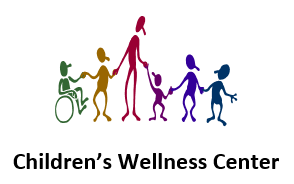As every parent knows, children don’t come with instruction manuals, and knowing the best ways to encourage desirable behaviors in children doesn’t come naturally to parents. Negative or punitive discipline techniques such as spanking, shaming, putting children in time-out, or withholding affection and attention have been associated with negative outcomes such as an increase in socially risky behavior in the future. For this reason, positive discipline for kids is now widely recognized as the best discipline technique.
What Is Positive Discipline for Kids?
Positive discipline focuses on teaching children desirable behaviors and good decision-making, rather than focusing on punishing undesirable behaviors and poor choices.
Positive discipline aims to create a foundation of communication, trust, problem-solving, and exploration that helps encourage an understanding of age-appropriate behaviors, expectations, and consequences as children learn to navigate and interact in the world.
The Benefits of Positive Discipline for Children and Teens
Unlike punitive discipline, which can trigger feelings of distrust, fear, and low self-esteem in children, positive discipline techniques impart many benefits.
- Promotes confidence and good self-esteem
- Motivates and encourages children
- Supports feelings of connectedness and bonding
- Models emotional stability and kindness
- Teaches children healthy expression
- Teaches children to understand their feelings
- Encourages problem-solving
- It’s effective
How to Use Positive Discipline: Positive Discipline Strategies for Children and Teens
Remember Your Child’s Age and Abilities
Your approach to positive discipline should be modified based on your child’s age and stage of development. As a child’s ability to reason and understand develops, you can adjust your expectations and methods.
Practice Connection and Redirection
Positive discipline uses connection to create a strong bond between you and your child so that they go to you when they struggle. It should establish you as a safe person for sharing feelings and asking for advice.
To build this connection, acknowledge your child’s feelings and show that you understand before redirecting their behavior by providing a suggestion (an alternative behavior or activity). Finally, remind your child that you love them with words and affection.
Pick Your Battles
Sometimes selectively ignoring certain, attention-seeking behaviors can more effectively put a stop to them than acknowledging the behavior with redirection. For example, if your toddler continuously spills their food to get your attention or your child continuously interrupts a conversation, ignoring the bid for attention sends the message that those behaviors are not effective.
Set Clear Guidelines and Expectations
Parents must establish clear rules, guidelines, and expectations for their child’s behavior.
Make Use of Natural Consequences
Some poor choices have immediate consequences that occur naturally. For example, a child who refuses to wear their coat will feel cold. If these consequences quickly follow the undesirable behavior, your child will learn the proper behavior without you saying “I told you so.”
Establish Logical Consequences
Logical consequences can be established with children who are old enough to reason and understand cause and effect. These types of consequences can include scenarios such as:
- You can’t play video games until you have finished your homework.
- If you stay up too late talking to friends, then you can’t have your phone in your bedroom.
- If you don’t wear a helmet, then you can’t ride your bike for the rest of the weekend.
Be Consistent
Children naturally push up against boundaries, and parents need to be there consistently to maintain those boundaries. Consistency not only provides the structure that your child craves but also helps your child learn what is truly expected of them.
Use Positive Reinforcement to Encourage Desired Behaviors
Positive reinforcement uses praise and rewards to encourage desired behaviors. Instead of focusing on catching your child misbehaving, positive reinforcement asks parents to catch their children in the act of behaving.
In addition to offering spontaneous praise and encouragement, you can also set up reward systems for your children such as sticker charts for finishing household chores, doing their homework, or remembering to brush their teeth before bed.
Reconnect With Understanding and Love
Children want to behave well. So, if they are misbehaving, there is usually a reason behind the behavior. The reason could be that the child wants attention, doesn’t know the expected behavior or rule, or that they are feeling shame or another negative emotion. When you understand the reason behind an undesirable behavior, you can better meet your child’s needs.
Whatever reason your child has made a poor choice or missed the mark, remember to repair your connection with love and affection after talking with your child about their actions.
When to Seek Professional Help With Behavioral Concerns in Children and Teens
At Children’s Wellness Center, we focus on helping to foster total wellness in our patients, including both physical, behavioral, and mental health. Throughout their growth and development, our pediatricians work with parents and guardians to help them provide their children and teens with the guidance and support they need to grow into healthy, happy young adults.
If you have any questions about positive discipline techniques for kids, please contact us.

